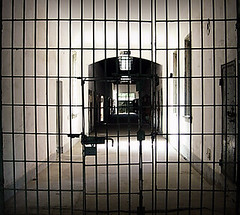According to a new national study, an estimated 10.7% of inmates at the Denver Women’s Correctional Facility claim staff members sexually assaulted them or were guilty of sexual misconduct between February 2011 and May 2012. The study, headed by Dr. Allen Beck, chief of the U.S. Bureau of Statistics, singled out 12 prisons—four female and eight male, including the Denver Women’s Correctional Facility—for a high rate of reported sexual misconduct.
The Denver Facility had an estimated 10.7% of inmates claiming sexual assault or sexual misconduct—highest in the nation and more than four times the national average of 2.4%.
Roger Werholz, interim executive director of the Colorado Department of Corrections, said:
I will not tolerate staff sexual misconduct. While the department has taken a number of steps to enhance security and to do everything possible to ensure safety, we will analyze these findings for opportunities to make further improvements.
Of the Denver facility’s female inmates claiming sexual abuse, 7.3% said they had been physically coerced or threatened with physical force—nine times the national rate of 0.8% of inmates. It is illegal for staff to have sex with inmates.
A sample of inmates from 225 prisons and 358 jails were asked personal questions before completing a touch-screen survey.
Werholz claims that timing may have been a factor in the results, since in 2008 an inmate sued in federal court, claiming she had been sexually assaulted by a corrections officer. She was awarded $1.3 million, and he was sentenced to 60 days in jail.
Another factor, according to Werholz, was a new anti-contraband policy requiring more intrusive body searches. Inmates filed many grievances, and the policy was changed.
Dawn Adams, age 42, who is serving a 24-year robbery sentence, said:
Many inmates are afraid to report sexual assaults, because when they have in the past, staff have accused them of making false reports, and they have been placed in administrative segregation. So none of us say nothing about nothing.
The Department of Corrections has instigated a series of measures that it credits for a decrease in sexual assault claims at Denver Women’s Correctional Facility, to 19 in 2012 from 66 in 2008. For example, 200 surveillance cameras have been installed in the prison.
The report also looked at inmate-on-inmate abuse and said that 4% of state and federal inmates reported being sexually victimized in the past year, down from 4.5% in a 2007 survey. So at Denver Women’s Correctional Facility, 12.2% of women in the weighted survey said they were sexually abused by either staff or other inmates.
Related Articles








































